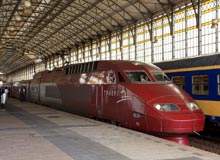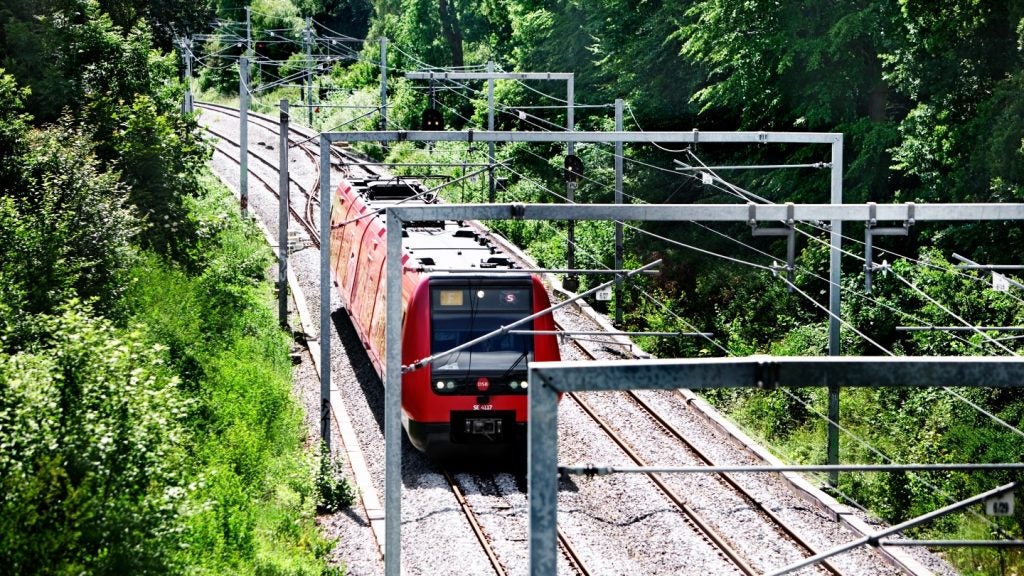
Closely associated with information technology, interoperability is an increasingly familiar rail operation term. In the simplest language, it means the ability of a system to work with, or use the parts or equipment of another.
For Europe’s collective railway network this implies being able to operate trains seamlessly across borders without incurring time or cost penalties. Whether passenger or freight, the customer should also experience a similarly cohesive service without cost hikes when borders are crossed.
Interoperability is however a relative rather than an absolute term, something being worked towards rather than an all-or-nothing condition.
An issue pursued on several fronts by the EU, interoperability has been manifest to some degree for many years. Most crucial is the widespread but not total use of ‘standard’ (1,435mm) gauge track on national networks. Given the number of countries within a relatively small area, this is a welcome legacy that facilitates through running and avoids trans-shipments.
Other interoperability in situ include long-distance services with coaching stock approved to work across the continent, vehicle steps that cope with different platform heights and standardised freight containers for intermodal services.
See Also:
Once a niche category, multi-system electric locomotives like the Alstom Prima or Bombardier Traxx families are now mainstream products allowing avoidance of locomotive changes or resorting to diesel power. Welcome though such features are, barriers that encompass infrastructure, equipment, systems and procedures still remain.
How well do you really know your competitors?
Access the most comprehensive Company Profiles on the market, powered by GlobalData. Save hours of research. Gain competitive edge.

Thank you!
Your download email will arrive shortly
Not ready to buy yet? Download a free sample
We are confident about the unique quality of our Company Profiles. However, we want you to make the most beneficial decision for your business, so we offer a free sample that you can download by submitting the below form
By GlobalDataBENEFITS OF INTEROPERABILITY
In Western Europe in particular, ‘long distance’ normally means cross-border operation. As recently as 2005, a memorandum of understanding between international bodies identified Europe as having six major different electrification and 23 different control command and signalling systems.
Collective concern over road congestion, safety, open markets and the environment are driving EC support for rail in general.
Although rail freight is resurgent, the higher tonnages carried are not matched by rail’s overall market share, which fell by 3.5% in the ten years up to 2005.
Rail cannot currently match road hauliers’ freedoms, notably needing little more than road access and compliance with prevailing regulations.
The greatest challenges for rail are still differing signal systems, multiple rolling stock approvals and siding length limits.
Locomotive acceptance is also viewed differently to the pan-EC acceptance of road vehicles. The situation is absurd when you consider, in some situations, a locomotive from one country needs separate approval to that for an identical type already approved in the host nation.
The European Commission, rail operators and equipment manufacturers are all fully aware that the continent’s railways have to remove these competitive disadvantages.
This could be achieved by reduced inspections, having fewer locos changed or standing by at borders and letting staff rotas be defined by time rather than by geography.
Such moves effectively reduce the protectionism enjoyed by some state railways and stimulate opportunities for open-access operators.
WHO IS BEHIND THE CHANGES?
The main executive body now bringing together stakeholders and setting standards is the European Railway Agency (ERA), an EU arm based in Valenciennes in northern France.
The Agency issues the Technical Specifications for Interoperability (TSIs), which were formerly the province of the European Association for Railway Interoperability.
Published in the Official Journal of the European Union, TSIs link to enactment dates and cover specified aspects of the Trans-European Transport Network.
The EU favours the application of these standards throughout the network.
In the interests of sense and cost control, however, TSIs do not necessarily specify one standard. For example, mindful of the ways things are in member nations, four ‘acceptable’ platform heights are identified.
VARIATION BETWEEN COUNTRIES
Inside the harder European borders of former years, national ways prevailed and in theory there could be as many standards as there were countries.
Before sourcing from global manufacturers became commonplace, a system’s stock and other equipment were often products of domestic companies. Even with export orders, these would accord with specifications of the buyer country and were rarely with a view to international operation.
Unsurprisingly, differences great and small emerged between neighbouring countries in such fields as electrification, signalling, clearances and marker lights. Variations in operating practices also evolved, some as fundamental as right or left-hand running, train lengths, staffing levels and safety criteria.
Seemingly trivial differences also arose, like those leading up to the LGV Est opening with both TGV and ICE use in 2007. The press scoffed while disagreements emerged between SNCF and DB partners over whether securing points for disruptive passengers would be fitted and which train staff would serve the coffee.
PRICES AND PAYMENT
One problem is that convergence carries a big price tag. Delays in implementing the European Rail Traffic Management System (ERTMS) have been exacerbated by a combination of fragmentation of rail haulage and the splitting of operations from infrastructure, which replaced one body with two in most member countries.
There have also been debates over who pays for that inherently expensive part of the system known as the kit, which has to be on each train, as opposed to on the infrastructure.
The EC has grants available for installations, but the HSL Zuid and Betuweroute sagas indicate that some things are easier said than done.
INTEROPERABILITY’S FUTURE
Of growing significance for the expanded EU are gauges other than ‘standard’ within and adjoining the Union. Entering the high-speed era, Spain’s decision to build at 1,435mm meant that joining the European network would become possible, albeit by denting the country’s domestic interoperability.
Following their pioneering technology for cross-border rolling stock, Spain’s Talgo is working on Trav-Ca, the first variable-gauge electric locomotive. For the EU’s eastern side, the ERA will be putting its energies into compatibility with the 1,520/1,524mm systems of Russia, parts of the former Eastern Bloc and Finland.
Interoperability has a chicken-and-egg aspect. If a product is made for compatibility with several systems, as with Vossloh Maxima 40 and G1206 locomotives, then it aids interoperability. In practice, both conditions currently apply: Europe is not yet in harmony, and there are years ahead that have to be coped with.
Compliance with convergence measures is far from total, nor is it evenly distributed. However, if networks do converge, in the long term the expense of working with dissimilar systems and practices must decrease.






